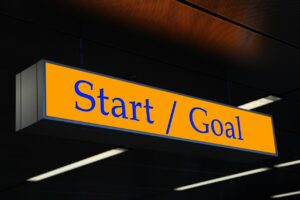
The men’s movement is a diverse and complex social phenomenon that has been evolving for several decades. At its core, the men’s movement beliefs seeks to promote the well-being of men and boys by challenging traditional gender roles, addressing issues of toxic masculinity, and advocating for men’s rights. In recent years, the men’s movement has gained renewed attention and support, in part as a response to the Me Too movement and a growing awareness of the challenges faced by men in modern society.
One of the key beliefs of the men’s movement is that traditional gender roles and expectations are harmful to both men and women. Men are often expected to be stoic, unemotional, and dominant, while women are expected to be submissive, nurturing, and passive. These expectations can lead to a range of negative outcomes, including mental health issues, relationship problems, and gender-based violence.
To counter these negative effects, the men’s movement seeks to promote a more flexible and inclusive view of masculinity. This includes encouraging men to express their emotions, engage in nurturing and caregiving roles, and reject toxic and harmful behaviours such as aggression and misogyny.
Another key belief of the men’s movement is that men face a range of unique challenges and issues that are often overlooked or ignored by mainstream society. These challenges include issues such as fatherhood, male mental health, and men’s experiences of violence and abuse.
To address these issues, the men’s movement advocates for greater recognition and support for men’s rights. This includes advocating for policies and programs that support fathers and families, promoting greater awareness and understanding of men’s mental health issues, and working to prevent and address male violence and abuse.
A related belief of the men’s movement is that men are often unfairly portrayed and demonized in the media and popular culture. Men are often depicted as violent, aggressive, and misogynistic, while women are portrayed as victims or passive bystanders. This can reinforce harmful gender stereotypes and perpetuate negative attitudes towards men.
To counter these negative portrayals, the men’s movement seeks to promote positive and diverse representations of men in the media and popular culture. This includes celebrating the achievements and contributions of men from all backgrounds, promoting positive male role models, and challenging harmful stereotypes and attitudes towards men.

Critics of the men’s movement argue that it is often dominated by white, heterosexual, and middle-class men and that it can sometimes reinforce harmful gender stereotypes and attitudes towards women. Some also argue that the men’s movement can be dismissive or hostile towards the concerns of women and other marginalized groups.
To address these criticisms, some elements of the men’s movement have sought to become more inclusive and intersectional, recognizing how gender intersects with other forms of oppression and discrimination. This includes advocating for greater recognition and support for the rights of women, LGBTQ+ individuals, and people of colour.
Overall, the men’s movement is a complex and evolving social phenomenon that reflects a growing awareness of the unique challenges faced by men in modern society. While there is still much debate and disagreement within the movement about the best strategies and approaches to addressing these challenges, there is a shared commitment to promoting healthy and equitable relationships between men and women, challenging harmful gender stereotypes, and advocating for the well-being of all individuals, regardless of gender or other characteristics.
In recent years, the men’s movement has also been influenced by the Me Too movement and the broader cultural shift towards greater awareness and accountability around issues of sexual harassment and assault. While some elements of the men’s movement have been critical of the Me Too movement and its focus on women’s experiences of harassment and abuse, others have recognized the importance of addressing these issues and have sought to promote greater accountability and awareness among men.
One important aspect of this shift has been a renewed emphasis on consent and healthy communication in sexual relationships. This includes encouraging men to seek affirmative consent from their partners, to listen and respond to their partner’s needs and desires, and to reject harmful and coercive behaviours such as sexual harassment and assault.
Another key aspect of the men’s movement’s response to the Me Too movement has been a renewed focus on men’s own experiences of sexual harassment and abuse. While the Me Too movement has primarily focused on women’s experiences, the men’s movement recognizes that men can also be victims of harassment and abuse and that these experiences can have a profound and lasting impact on their well-being.
To address these issues, the men’s movement has advocated for greater recognition and support for male survivors of sexual harassment and abuse. This includes promoting greater awareness and understanding of male survivors’ experiences, challenging harmful stereotypes and myths around male victimization, and advocating for policies and programs that support survivors’ healing and recovery.
Despite these important efforts, the men’s movement remains a contested and controversial social phenomenon, with some critics arguing that it can reinforce harmful gender stereotypes and attitudes towards women, and others arguing that it is necessary and important for addressing the unique challenges faced by men in modern society.
Ultimately, the future of the men’s movement will depend on its ability to continue evolving and adapting to changing social and cultural contexts. This includes recognizing how gender intersects with other forms of oppression and discrimination, promoting healthy and equitable relationships between men and women, and advocating for the well-being and rights of all individuals, regardless of their gender or other characteristics.

In conclusion, the men’s movement is a diverse and complex social phenomenon that reflects a growing awareness of the unique challenges faced by men in modern society. While there is still much debate and disagreement within the movement about the best strategies and approaches to address these challenges, there is a shared commitment to promoting healthy and equitable relationships between men and women, challenging harmful gender stereotypes, and advocating for the well-being of all individuals, regardless of gender or other characteristics. As the movement continues to evolve and adapt to changing social and cultural contexts, it will be important to remain vigilant and critical and to ensure that it remains grounded in a commitment to justice, equity, and respect for all individuals.







